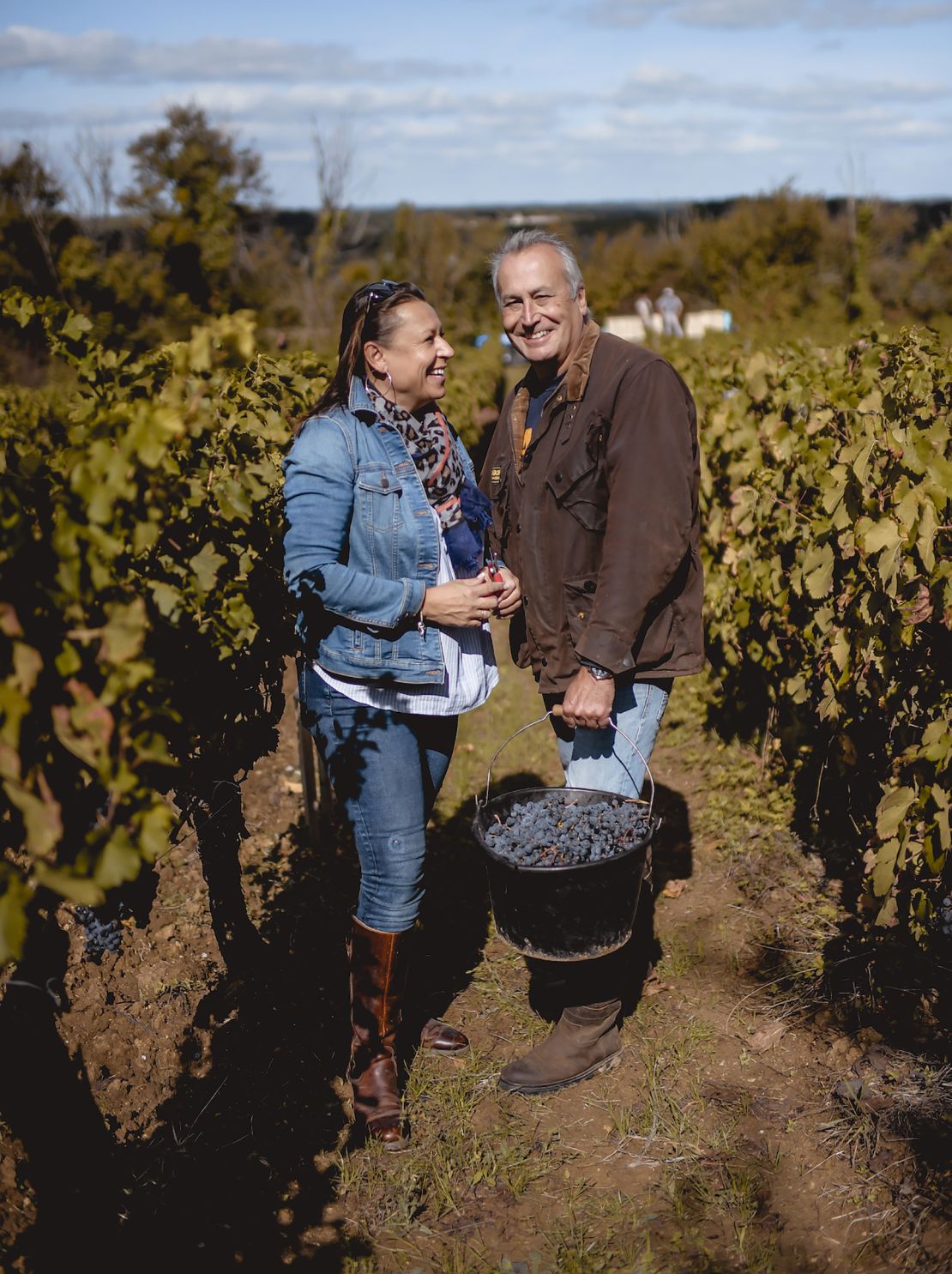Jordi Ustrell expects his vineyard’s tinder-dry plants to produce about half of their usual 15,000 bottles of wine this year.
“That’s a big loss,” the interim chief executive of Celler Devinssi, a small winery in the Spanish town of Gratallops, told CNN.
Ustrell is one of scores of European winemakers struggling to grow enough grapes as extreme and unseasonable weather becomes more commonplace. High input costs and declining consumption are adding to the woes of small, independent wineries.
According to the International Organisation for Vine and Wine (OIV), an industry group, global wine production is set to fall to its lowest level since 1961 this year, hit by soaring temperatures and extraordinary flooding. Fueling that decline are expected drops of 12% and 14% in output in Italy and Spain, the world’s biggest and third-biggest producers in 2022, respectively.
Climate change is having a “tremendous” impact on wine production, Giogio Delgrosso, head of statistics at the OIV, told CNN.
Delgrosso said that, in the past, extreme weather would strike every few years to interrupt long stretches of healthy, abundant harvests. “Now extreme climate events are always happening. Every year there’s something.”
This year, heavy rainfall has helped mold spread through vineyards in central and southern Italy, while a severe drought and soaring temperatures have blighted vineyards in Spain.
Other major wine producers, including Australia, South Africa and Chile, are expected to suffer drops of between 10% and 24% in output this year, according to OIV data, as floods, wildfires, droughts, and fungal disease have hammered vineyards.
The changing climate is helping others, however. Output in the United States, the world’s fourth-largest producer, is forecast to grow 12% this year. Greg Jones, a climatologist and chief executive of Abacela, an Oregon-based winery, told CNN that, half a century ago, the state couldn’t grow grapes. Now, he said, rising temperatures have made Oregon “one of the top producing regions in the country.”
Ustrell in Spain has come to live with the unpredictable weather.
For about two years now, it has hardly rained in Gratallops, which lies about 90 miles west of Barcelona. That has put serious stress on Ustrell’s vines. And snow, which seeps into the deepest layers of the soil, providing moisture for the vines during the dry summer months, hasn’t fallen once in that time.
It’s little surprise, then, that Ustrell’s harvest of Cabernet Sauvignon — a variety of red wine grapes traditionally grown in France’s Bordeaux region, where conditions are more humid — was the first to, as he put it, “collapse” this year.
Vineyards in Gratallops are so parched, he added, that 26 of its 28 wineries, including Celler Devinssi, have recently formed an association to lobby local authorities for funding to improve the water supply for irrigation, even if that means delivering huge vats of water into the town via truck.
Celler Devinssi is not at risk of closure, but the 23-year-old firm’s bank account will almost certainly “be in the red” this year, according to Ustrell.
Falling prices, rising costs
Across the border, French winemakers are grappling with the opposite problem: Too much wine.
France is on track to pip Italy to become the world’s biggest producer this year, according to OIV data, up from second place in 2022. The country maintained the same level of production as last year thanks to more favorable weather.
But the burgeoning supply of wine has exceeded waning demand in France and abroad, pushing down prices.
The mismatch prompted French and European Union authorities to announce a joint €200 million ($217 million) buyback scheme this summer, allowing French winemakers to sell their excess stock to distilleries for recycling into other alcoholic products like hand sanitizer.
Falling prices have coincided with rising input costs.
Over the past two years, a mix of soaring inflation and historically high energy prices has jacked up the cost of inputs like fertilizer, bottles and transportation fuel. Add to that higher interest rates, which have made borrowing to invest much costlier, and many winemakers’ already-narrow profit margins have all but disappeared.

French winemakers struggling to sell their own produce have taken out their anger on imports from Spain. Hundreds of them descended on a major cross-border highway last month and stormed trucks transporting Spanish wine into France. The protestors smashed crates and emptied gallons of imported wine onto the road.
Frédéric Rouanet, who organized the demonstration, explained to CNN that Spain makes many lower-priced wines and said the message to merchants was clear: “If you want to get cheap wine from Spain, you’ll have to buy our wine from us first.”
Otherwise, said Rouanet, who runs an association of winemakers in Aude in France, the region’s wineries simply “can’t get by.”
‘Lost forever’
Meanwhile, people around the world are drinking less wine than in previous years, opting for beer or spirits instead, or ditching alcohol altogether.
Globally, wine consumption has fallen about 6% between 2017 and 2022, OIV data shows, as consumers have changed their drinking habits and inflation has eroded their disposable income. That means nearly 1.9 billion fewer wine bottles were drunk last year than in 2017.
Estimates for this year, cited by the European Commission in June, show even steeper declines across European countries, suggesting the trend may be accelerating.
The multiple pressures have forced some vineyards to close their doors.
Michael Baynes, co-founder of Vineyards-Bordeaux Christie’s International Real Estate, an investment advisory specializing in vineyards, said the number of winemakers selling up, while still a tiny fraction of all Bordeaux producers, had “dramatically increased” this year.
“It’s a bloodbath,” he told CNN. “We’re seeing some very sad stories at the moment. A lot of multigeneration families are losing estates that they’ve nurtured for many years.”
Their problems started 20 years ago, Baynes said, when Bordeaux’s lower-priced wines were forced into competition with “New World” wines — such as those from Chile, Argentina and Australia — that were rising in popularity.

Surviving family-run wineries, and larger wineries selling into the lower end of the market, are in a precarious position, Baynes said. A bad harvest, a new export tariff, another interest rate hike can be all it takes for a generations-old winery to shut for good.
And “jittery and nervous” lenders aren’t coming to the rescue of wineries they suspect would struggle to repay expensive loans, he added. “They are turning off the tap of lending.”
“The families, the generations, the blood, sweat and toil that has gone into creating a lovely product may be lost forever.”
A path forward
Climate change was the reason John Mitra sold the Bordeaux vineyard he owned with his wife, Penelope, last year as it made predicting each year’s harvest too difficult.
“It’s just too risky,” he told CNN. “Some years you would get 3,000 bottles off a hectare. Other years, you’d end up with 50. Unless you have substantial financial backing behind you, you can’t operate.”
The couple have since moved 340 miles east to establish The Burgundy Wine Company, a merchant specializing in wines produced by small, independent vineyards.
They chose the Burgundy region because it is very small, and so the wine produced there — less available, more coveted — fetches higher prices than wine from many other places.

More and more of Mitra’s suppliers and friends in the industry are deciding to sell their vineyards, or taking advantage of a French government subsidy to uproot their vines and replant the land with new crops, or to simply turn it over to woodland.
Some have replaced their vines with olive trees and kiwi plants, he said, because they are more resistant to drought.
Mitra misses his previous occupation. For 12 months, through “rain or freezing cold,” he and his wife would tend to their vines. The two or three days spent harvesting the grapes each year made it all worthwhile, he said.
Still, Mitra is happy to have chartered a new path in an industry he adores, and feels lucky to still be living among France’s fabled vineyards.
“Now I just walk my dog in the vines, rather than own them.”









